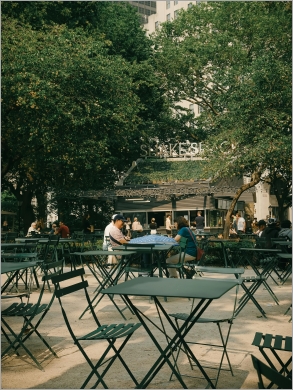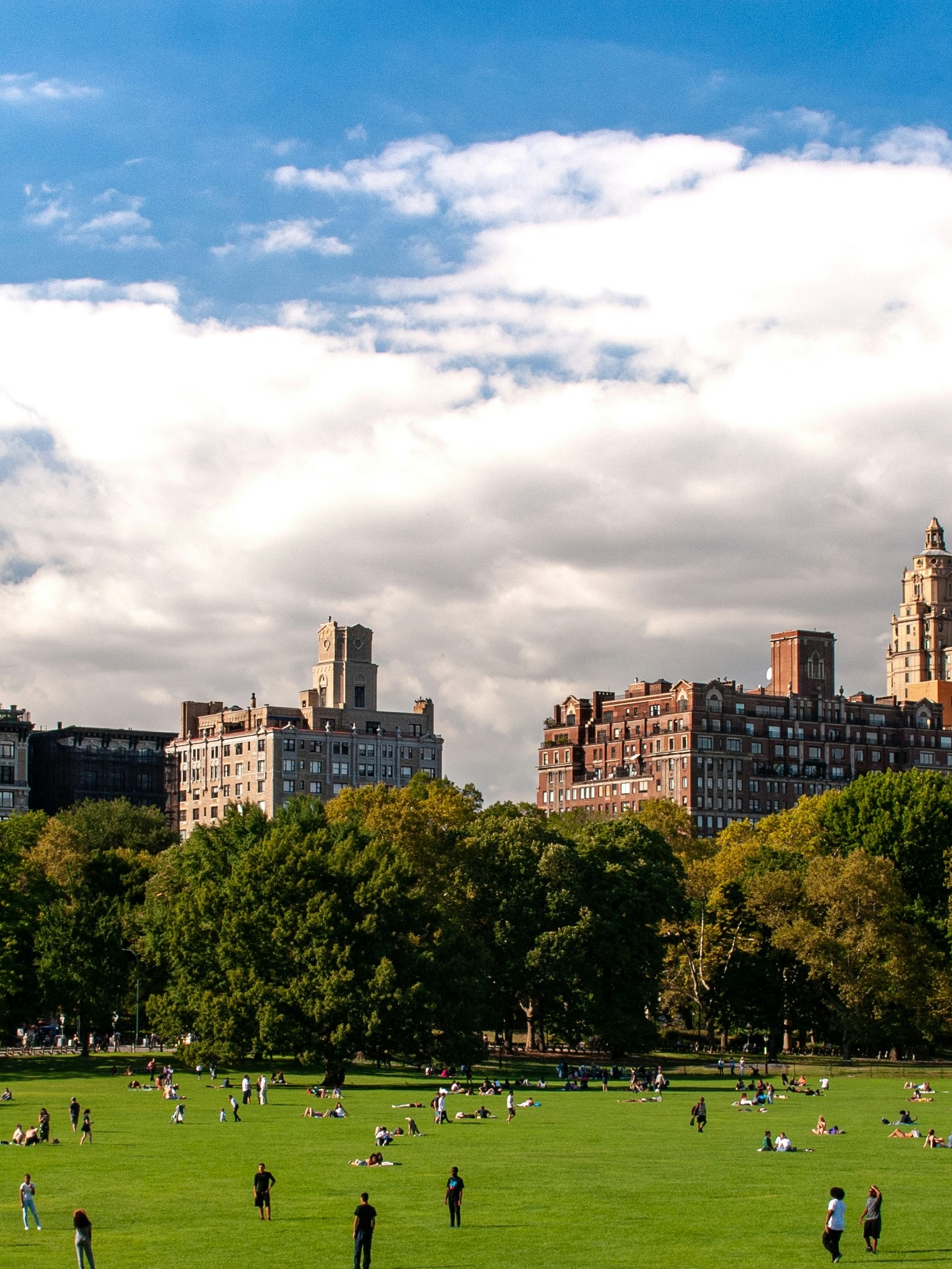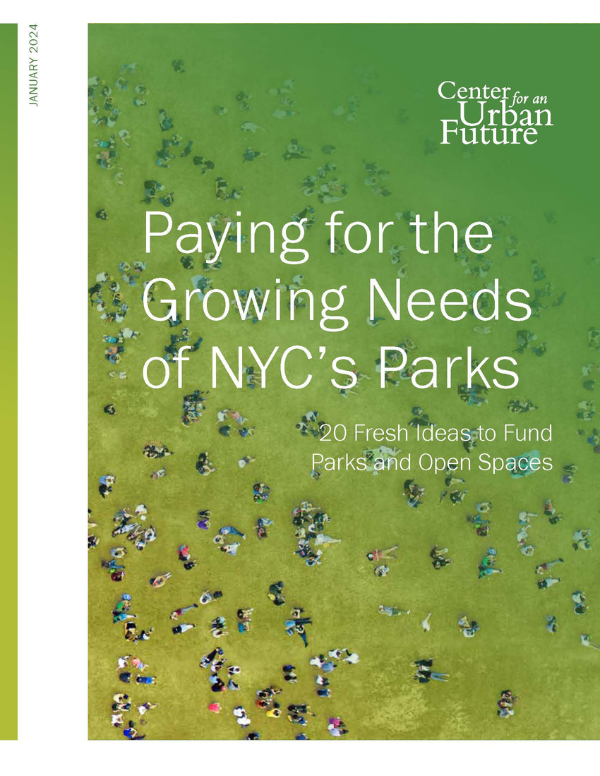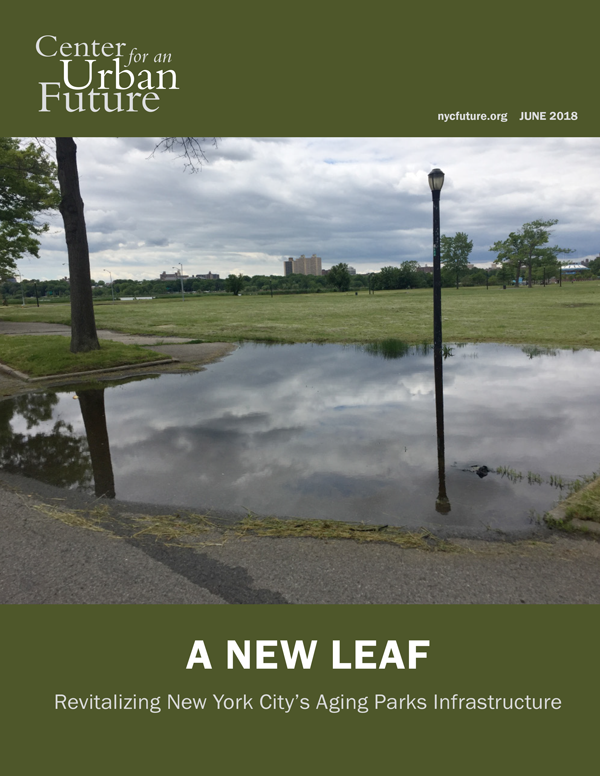Testimony of John Surico
Senior Fellow for Climate and Opportunity, Center for an Urban Future
Before the New York City Council Committee on Parks and Recreation
March 21st, 2024
Good afternoon. I’m John Surico, the Senior Fellow for Climate and Opportunity at the Center for an Urban Future, an independent think tank focused on creating a stronger and more inclusive economy in New York. Thank you to Chair Krishnan and members of the committee for the opportunity to testify.
New York’s parks, playgrounds, and open spaces have experienced record usage in recent years, becoming even more vital to the health of New Yorkers and more critical to the city’s economic future. But today, our 30,000 acres of parks and natural areas face hundreds of millions of dollars in unmet maintenance and infrastructure needs, and for years, if not decades, New York City has struggled to provide sufficient funding to pay for them.
This is not a new challenge. In 2018, Center for an Urban Future (CUF) published A New Leaf, an exhaustive study on the state of the city’s parks infrastructure. Our report found that underinvestment in maintenance and operations, and a dwindling full-time headcount, were contributing to growing infrastructure problems across the system, and allowing relatively minor maintenance challenges to metastasize into serious capital needs. That research helped catalyze the Play Fair coalition, which successfully secured a historic infusion of parks maintenance dollars from this body in 2019.
But yet again, parks find themselves in a familiar cycle of disinvestment and degradation. Despite the best efforts of NYC Parks’ overstretched staff, too many parks and playgrounds experience flooding after ordinary rainfalls; bathrooms, field houses, and trails fall into disrepair; trees go years without inspection and pruning; and invasive species outcompete native plants. It’s little wonder that these challenges pile up like leaves in autumn when the agency’s headcount has fallen 38 percent since the mid-1970s.
The city is facing multibillion dollar deficits in the coming years, and the mayor has proposed cutting $53.8 million in city funding from the Parks budget to help close the gap. We strongly support the City Council’s efforts to work with the administration to restore this funding. But without deeper changes, it’s unlikely there will ever be enough dollars allocated through the budget process to meet New York’s ever-growing parks and open space needs.
That’s why city leaders need to get creative and seek out new sustainable sources of recurring funding for parks. Our newest parks report at CUF outlines 20 specific and achievable ideas to do exactly that.
A new $1 surcharge on tickets sold at stadiums located on parkland, like Citi Field and Arthur Ashe Stadium, could help offset a significant share of the parks systems’ unmet maintenance needs. At Citi Field alone, this surcharge would generate more than $2.5 million for parks—enough to hire more than 50 full-time gardeners.
A modest expansion of restaurants, cafes, and other concessions in parks—like year-round spas in existing pool houses—could generate new funding for parks while enhancing the experience of parkgoers. Right now, there are surprisingly few restaurants, cafes, ice cream shops, and other concessions in parks across the five boroughs. Where these concessions do exist, like the Shake Shack in Madison Square Park and the McCarren Parkhouse in Williamsburg, they invariably make the parks even more appealing.
City officials could also consider enacting fees on gas-powered landscaping and stormwater management and soliciting a voluntary contribution from hotel guests. For-profit events held in parks, from soccer camps to music festivals, should be asked to contribute more to parks’ bottom line. And by investing in the infrastructure needed to monetize organic waste from parks, including turning fallen trees into commercial lumber, the city can convert the multimillion-dollar annual expense of tree disposal into a steady stream of revenue.
Similarly, the city should enable more New Yorkers to directly support their green spaces. For example, a membership program with corporate tiers, ticketed special events, and well-designed merchandise could tap New Yorkers’ pride—and generosity—to benefit parks. And New York City needs to make it much easier for nonprofit organizations and community groups to step in and support their local parks—a process that all too often gets bogged down in bureaucracy.
In addition to generating new revenues for parks, policymakers should also establish mechanisms to ensure that the new resources benefit parks in every corner of the city—not just those that can support new revenue-generating opportunities. One idea is to create an 80-20 split for all future revenue from new parks concessions, with 80 percent remaining with the park hosting the new concession and 20 percent allocated to a fund to support parks with the greatest needs, particularly those in lower-income communities.
The Center commends the City Council for consistently championing parks and open space, and advocating for funding to address the full scope of New York City’s public parks’ needs. Thanks, also, to Chair Krishnan for his thoughtful consideration of the ideas in our recent report.
Our report lays out a number of clear paths for legislative and policy actions to ensure that infrastructure—both existing and new spaces—is fully funded and maintained for years to come. Because despite growing consensus among New Yorkers that parks are vital to the city’s future, there has been little clarity over one crucial decades-old question: How to pay for it all? By getting creative about generating dedicated new revenues for parks, city leaders can deliver the healthy, vibrant parks and open spaces that New Yorkers need now, and for decades to come.
Thank you for the opportunity to testify.






